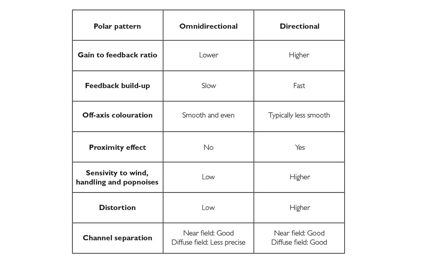Acoustic modification accessories
This article explains how Acoustic Pressure Equalizers can increase the directivity of a pressure microphone, providing a mid/high-range boost. It also explains the effect of various grids in front of the membrane. You will learn about the application of acoustic modification (acoustic pressure equalizers and grids) and the purpose of doing so.

Tagged Products
By using DPA Acoustic Modification Accessories, you can acoustically alter the behavior of your microphone. From a single 4006 Omnidirectional Microphone you can achieve different frequency responses and directional characteristics without compromising noise, phase-shift or distortion. Every console or outboard EQ – no matter the quality – will, to some degree, add these affectations to the sound color.
Acoustic Pressure Equalizers
Acoustic Pressure Equalizers – APEs – are passive acoustic processors functioning as both spatial and spectral equalizers. They use diffractions on the surface to modify the sound field near the microphone diaphragm. This technique is only possible on omnidirectional pressure microphones.
When using an APE, two primary changes occur:
1. An upper-midrange / high frequency boost (without changing the low end) due to the pressure build-up at certain frequencies depending on the element’s size.
2. More directionality at higher frequencies (focus).
A presence (upper-midrange) lift is often desirable in rhythmical genres, to make a voice or an instrument cut through a mix or simply to make it more intelligible or well-defined. For symphonic music, the frequency response of certain legendary vintage types of microphones can be obtained using one of the APEs. However, you will achieve a much higher degree of naturalness and detail when using a precision handcrafted 4006 Omnidirectional Microphone.



The APEs
APE30RS, 30 mm ball


Frequency response of 4006 with APE30

Polar plot of 4006 with APE30
APE40RS, 40 mm ball


Frequency response of 4006 with APE40

Polar plot of 4006 with APE40
APE50RS, 50 mm ball


Frequency response of 4006 with APE50

Polar plot of 4006 with APE50
Reference: The principles of the acoustic pressure equalizers are described by Wieslaw Woszczyk:
The Increase of Transducer Directivity Using Diffractive Attachments.
J. Acoust. Soc. Am. 84, S5 (1988); http://dx.doi.org/10.1121/1.2026392.
Interchangeable grids
The interchangeable grids are not only for protecting the microphone diaphragm. They are an important part of the microphone’s acoustical design. They are used to obtain a final adjustment of the frequency response and to control the behavior of sound waves on the diaphragm. The use of these grids is relevant when you want an adaptation of the microphone’s frequency response to the sound field. In the diffuse sound field a high frequency loss will occur. This can be compensated for by using the DD0297 Diffuse-field Grid, which – as with the Acoustic Pressure Equalizers – will work as an acoustical object over the capsule.
The DD0254 Close-miking Grid will gently roll-off the highest audible frequencies to make the microphone’s response softer for the often-intense high frequency character from sound sources recorded at very short distances.
The UA0777 Nose Cone makes the microphone perfectly omnidirectional in the audible frequency range and can be used in optimal acoustic environments where every direction should be reproduced uncolored.
Grid diagrams
Tagged Products
On-axis response of a 4006A Omnidirectional Microphone with DD0254 Close-Miking Grid

Directional Characteristics of 4006A Omnidirectional Microphone with DD0254 Close-Miking Grid

On-axis and diffuse-field responses of 4006-TL Omnidirectional Microphone with DD0297 Diffuse-Field Grid

Directional characteristics of 4006-TL Omnidirectional Microphone with DD0297 Diffuse-Field Grid (normalized)

UA0777 Nose Cone: Diffuse-field response of DPA 4003/4006-TL with Nose Cone UA0777

It’s like using an equalizer – but then again not...
Whenever you switch in a filter or EQ electronically, it will influence the total sound field picked up by the omnidirectional microphone. You actually do a 360° equalization of the microphone signal. Alternatively, by using acoustic modification accessories, you can choose to make the desired frequency alteration in the direction you actually need it. The change is made acoustically – right at the diaphragm.
Every sound engineer will bring along his toolbox to optimize his work and has the ability to choose the right tool for the specific job. For the ambitious and discerning sound engineer, the DPA Acoustic Modification Accessories are serious tools to claim.





